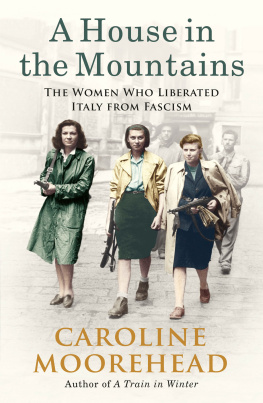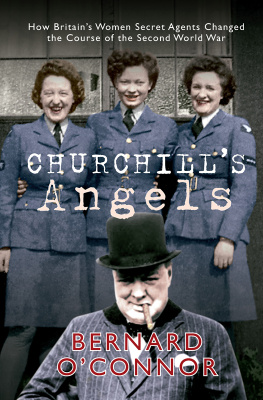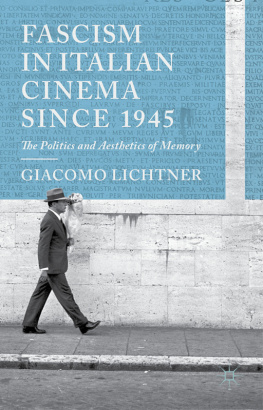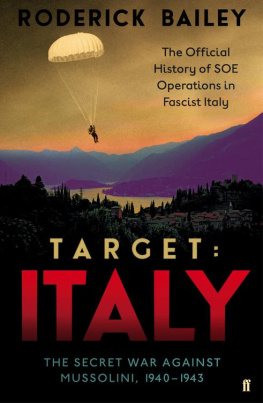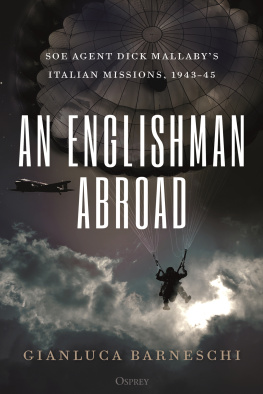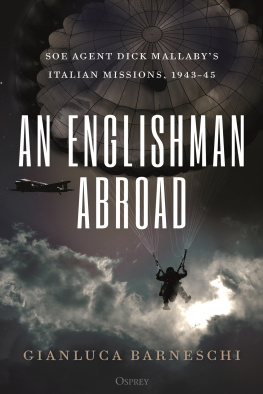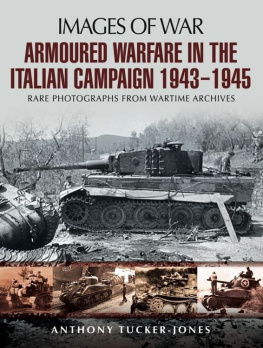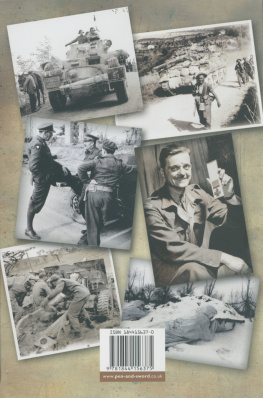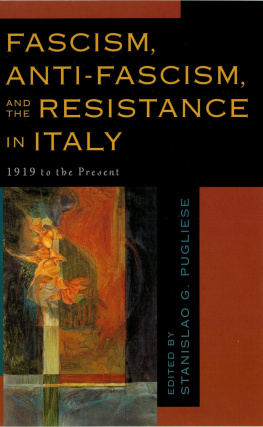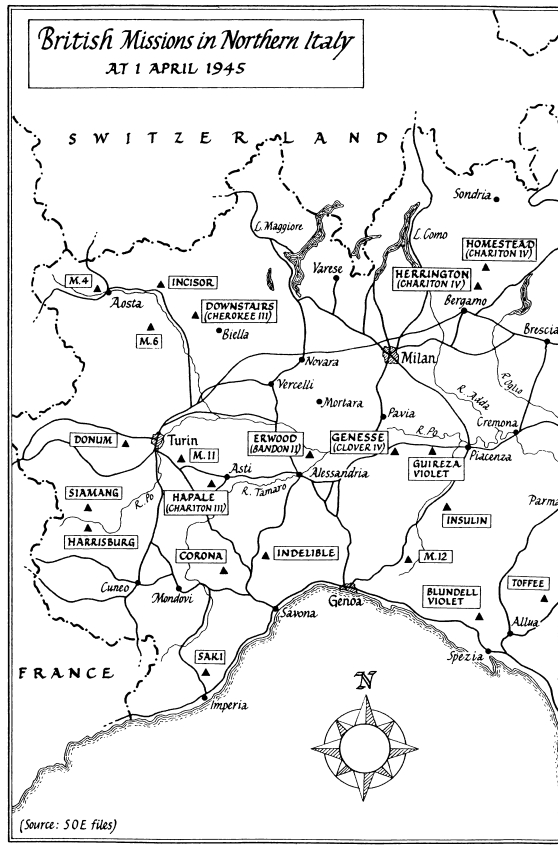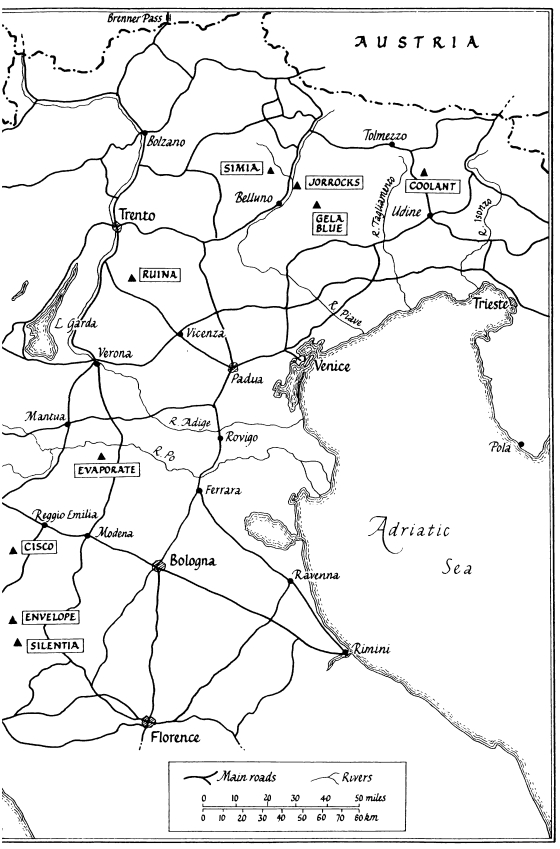MISSION
ACCOMPLISHED
SOE and Italy 194345
David Stafford
First published by The Bodley Head in 2011
Copyright David Stafford 2011
This edition published in 2020 by Lume Books
30 Great Guildford Street,
Borough, SE1 0HS
The right of David Stafford to be identified as the author of this work has been asserted by them in accordance with the Copyright, Design and Patents Act, 1988.
All rights reserved. No part of this publication may be reproduced, stored in a retrieval system, or transmitted in photocopying, recording or otherwise, without the prior permission of the copyright owner.
Table of Contents
Glossary
A Force : The Mediterranean deception unit (using training in escape as its cover).
AAI : Allied Armies in Italy.
ACC : Allied Control Commission.
AFHQ : Allied Forces Headquarters.
AMG : Allied Military Government.
BCRA : Bureau Central de Renseignements et dAction. The Free French intelligence and special operations service.
BLO : British liaison officer.
CLN : Comitato di Liberazione Nazionale Committee of National Liberation.
CLNAI : Comitato di Liberazione Nazionale di Alta Italia National Committee of Liberation for Upper (Northern) Italy.
CVL : Corpo Volontari della Libert Corps of Volunteers of Liberty. The armed partisan units of the resistance.
FSS : Field Security Section.
FANY : First Aid Nursing Yeomanry.
GAP : Gruppi di Azione Patriottica. Small city-based resistance hit squads.
GCI : Gruppi Combattenti in Italia. Volunteer organisation formed by General Pavone but quickly dissolved by the ACC.
GL : Giustizia e Libert Justice and Liberty, an Italian anti-Fascist movement.
ISLD : Inter-Services Liaison Department. Cover title for SIS in Italy.
IS9 : Title for MI9 in Italy.
MAS : Motoscafo antisommergibile . A fast Italian submarine hunter.
MI5 : The Security Service.
MI6 : The Secret Intelligence Service, or SIS.
MI9 : The Escape and Evasion Service.
MI(R) : Military Intelligence (Research), a branch of the War Office.
MS : Motosilurante . An Italian motor torpedo boat.
ORI : Organizzazione della Resistenza Italiana. Resistance group formed by Raimondo Craveri.
OSS : Office of Strategic Services (USA).
OVRA : Organizzazione per la Vigilanza e la Repressione dellAntifascismo. The Fascist secret police force.
PdA : Partito dAzione Action Party.
PWB : Psychological Warfare Branch.
PWE : Political Warfare Executive.
SD : Sicherheitsdienst. Intelligence agency of the SS.
SHARF : Supreme Headquarters Allied Expeditionary Force (North-West Europe).
SIM : Servizio Informazione Militare Military Intelligence Service.
SIMCOL : Operation launched by Lt Col. A. C. Simonds to rescue escaped prisoners of war in Italy.
SIS : Secret Intelligence Service.
SOE : Special Operations Executive.
SOM (sometimes SO(M) ): Special Operations (Mediterranean).
SPOC : Special Project Operations Centre.
TAC HQ : SOEs forward tactical headquarters in Florence.
USAAF : United States Army Air Force.
Introduction
Florence, 7 August 1944. After weeks of gruelling fighting in the Apennines, allied armies finally reach the southern bank of the River Arno. On the other side, in the heart of the old Renaissance city, the Germans are under constant fire from the resistance. The population hovers on the edge of starvation. The only bridge linking the two parts of the city left standing by the Germans is the tenth-century Ponte Vecchio. To prevent the allies from using it, they have demolished the houses standing on its southern end, mined the approaching streets and given their machine-gunners and snipers a clear line of fire.
But high above their heads runs a secret passageway across the bridge known as Vasaris Gallery, designed in 1565 by the painter and architect Giorgio Vasari to allow the Medici family to move between their various residences unobserved and safe from potential assassins. Unknown to the Germans, it shelters a secret telephone wire. Installed just two days before by an Italian resistance fighter after a perilous crawl past enemy guards, it gives his headquarters in the ancient city a continuous and direct twenty-four-hour link with the allies.
This morning, as the sun begins to warm the yellow of the citys walls, a British officer scurries through the rubble and scrambles up a rope to the gallery. Its floor has been largely destroyed, and as he crawls through the shattered beams he wonders if the secret has yet been discovered by the Germans and if hes about to be shot. If he is captured alive, his fate might be worse hes not carrying a suicide pill with him and he might well be tortured. Apart from his commando dagger, hes armed only with his automatic pistol. The city of the Medicis is infested with German snipers and booby traps.
His mission is to see whether there is any chance that an allied battalion might exploit the bridge and its secret passage to cross the river undetected. He also wants to check out personally the reliability of the telephone link; has it been discovered by or been betrayed to the Germans?
On inspection, everything turns out to be as it should. The wire still lies well concealed, and there is no evidence that the Germans have discovered the passageway. He also rapidly concludes that it will not be practical for even a specialised company to use the bridge to surprise the Germans. It might reach Italys greatest art gallery, the Uffizi. But it would then be at the mercy of German guns that could easily destroy any building that the battalion occupied.
After completing his reconnaissance, he makes it safely back to the other side. Over the next few days the telephone link offers a running commentary on the state of fighting between the Germans and the resistance and provides invaluable tactical intelligence to the allied forces who stand poised to enter the city. By contrast with Rome, liberated two months before without a struggle, in Florence the resistance is offering serious help to the allies. So important is it considered, indeed, that the officer is flown back to London to report personally to his superiors on what he has witnessed.
The officer, Major Charles Macintosh, was head of the Florence mission of SOE, the Special Operations Executive, the top-secret agency created in July 1940 following the collapse of the French Army. British strategic planners had originally counted on France to provide the principal ground force that would lead the fight against Hitlers Germany and take the offensive back to the Nazi heartland. But with the capitulation of the French a drastic alternative had been required. Out of the crisis, the chiefs of staff and prime minister turned to a new weapon of warfare.
SOE was designed to mobilise and support popular resistance inside occupied Europe in the hope that together with the continued naval blockade of the continent and the strategic bombing of Germany, popular revolt would so weaken the Germans that the eventual landing of British forces in Europe would spark the collapse of the Nazi regime. Set Europe ablaze was Churchills legendary injunction to the man he placed in charge of SOE, the veteran Labour politician and minister of economic warfare, Hugh Dalton. After Pearl Harbor SOEs mandate became global, and by the time the Second World War ended it could boast a staff around the world of some thirteen thousand men and women, with at least half of this total having worked as secret agents in neutral countries or behind enemy lines.


